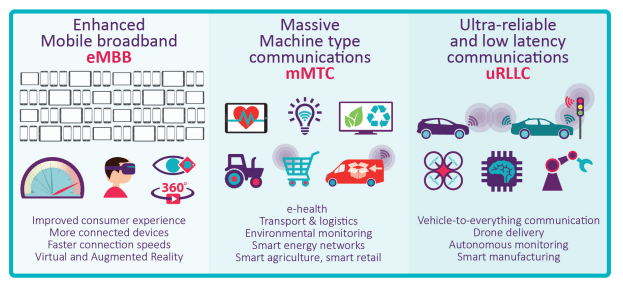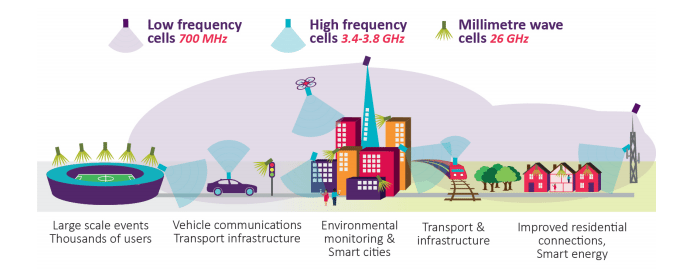Regulator plans include spectrum across low-, mid- and high-band channels to support 5G trials beginning in 2018, and commercial services in 2020.
United Kingdom telecommunications regulator Ofcom is looking to bolster spectrum support for planned “5G” services with a number of long-simmering initiatives across various bands.
Ofcom said this year it plans to award spectrum in the 2.3 GHz and 3.4 GHz bands; move on transferring spectrum in the 700 MHz band towards the telecom industry; and look “to make sufficient spectrum available for 5G.” The spectrum moves are expected to support 5G trial deployments beginning in 2018, ahead of commercial 5G services being available in 2020.
Similar to use cases expressed by telecom operators, vendors and standards bodies, Ofcom said it expects initial 5G deployments to focus on enhanced mobile broadband, massive machine-type communications, and “ultra-reliable and low-latency communications.”

“These different services have different requirements in terms of speed, coverage and reliability, which will demand different network solutions (the evolution of existing network and potentially new networks) and different deployment models (including many small cells), an appropriate network infrastructure (which will include both fiber and wireless connectivity to the core network) and access to different spectrum bands,” the regulator noted in a report.
In addition to spectrum work in the 2.3 GHz, 3.4 GHz and 700 MHz bands, Ofcom is looking at the 3.4 GHz to 3.8 GHz bands and the 24.25 GHz to 27.5 GHz bands for “ultra-dense very high capacity networks.” The 700 MHz band was cited as providing low-band support focused on coverage; the 3.4 GHz to 3.8 GHz band was noted as a “primary” band to provide capacity for 5G services; and the 24.25 GHz to 27.5 GHz band was labeled as “pioneer” millimeter wave spectrum for higher capacity services.
“The choice of 700 MHz, 3.4 to 3.8 GHz and 26 GHz will create the best opportunity for the U.K. to benefit from the first wave of 5G equipment,” the report stated.

Specific work with the 700 MHz band is set to include the continued transitioning of television broadcasters currently in that band with a target of awarding licenses to telecom operators in either 2018 or 2019, with nationwide availability for 5G services by mid-2020.
For the 3.4 GHz to 3.8 GHz bands, Ofcom noted 150 megahertz between 3.4 GHz and 3.6 GHz has already been cleared and is set for auction later this year, with 84 megahertz in the 3.6 to 3.8 GHz band already assigned for mobile using a shared model, and the remaining 116 megahertz in that band out for discussion in terms of potential shared use with current satellite earth stations and fixed link users.
Ofcom said it sees spectrum around the 26 GHz band as a potential target for global harmonization efforts.
Plans for the 2.3 GHz and 3.4 GHz bands have been on the table for some time, with Ofcom in late 2015 stating plans to auction 190 megahertz of spectrum across those bands in early 2016.
Bored? Why not follow me on Twitter.

